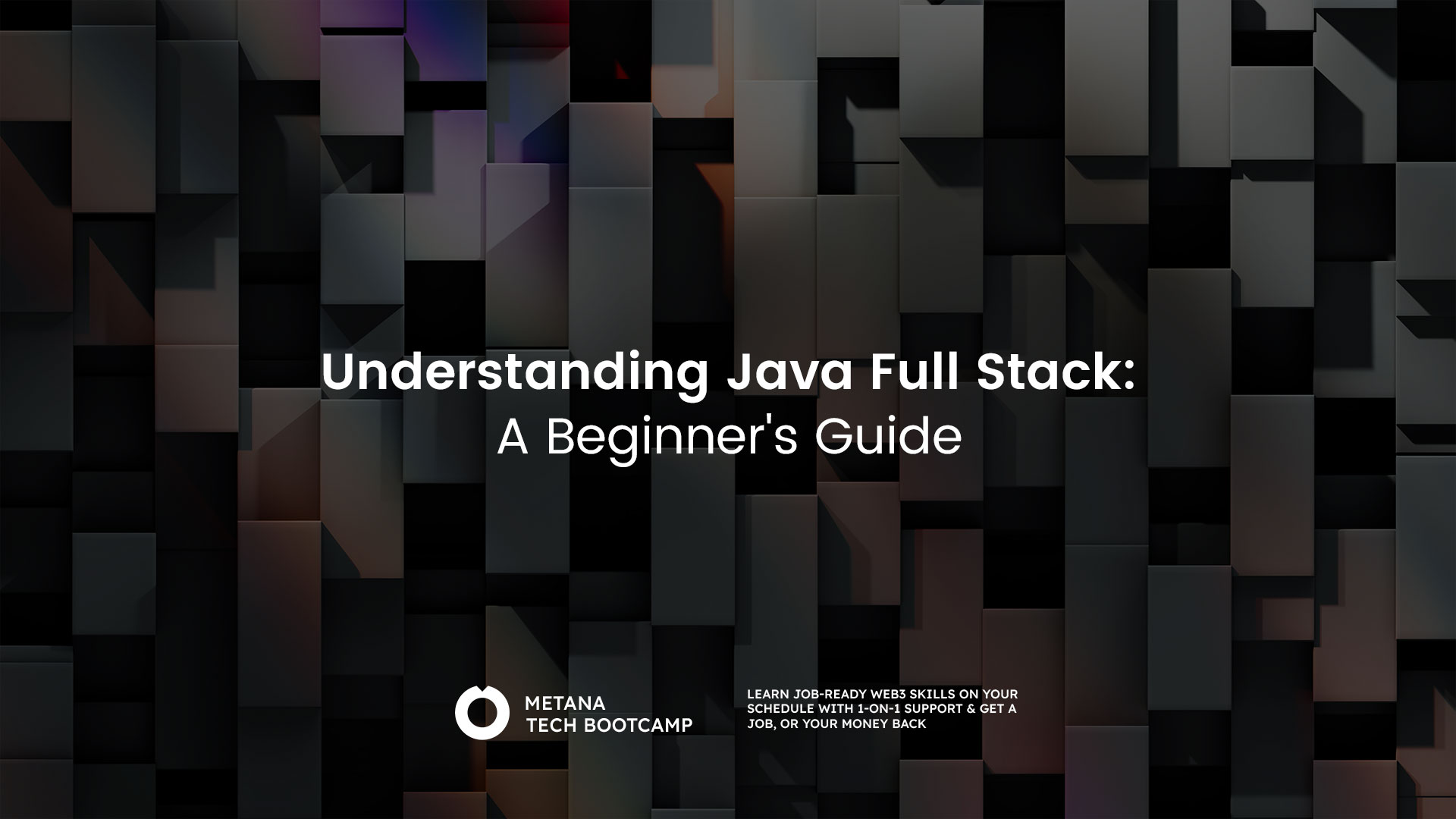Understanding Java Full Stack: A Beginner’s Guide
 Metana Editorial
Metana Editorial
In today’s world, web development has become more complex and engaging, offering dynamic and responsive user experiences. This evolution has led to the emergence of “full stack” development, a term that mystifies many beginners. Specifically, when we talk about Java Full Stack, we’re referring to a comprehensive approach to web development using Java technology. Let’s break down this concept into understandable chunks for those just starting their journey in the tech field.
What is Full Stack?
Before diving into Java Full Stack, let’s understand what “full stack” means. In web development, the “stack” refers to the layers of technology used to create a web application. These layers are broadly categorized into two parts:
Frontend (or Client Side): This is the part of your web application that users interact with. It includes everything the user experiences directly: text, images, buttons, and layouts. The main technologies used for frontend development are HTML, CSS, and JavaScript.
Backend (or Server Side): The backend is where all the data processing happens. It’s the server-side of your application, handling database management, user authentication, and server logic. The backend is responsible for responding to requests from the frontend and sending data back to be displayed to the user.
A “full stack” developer is someone who has the skills to work on both the frontend and backend parts of a web application. This brings us to Java Full Stack.
What is Java Full Stack?
Java Full Stack refers to the combination of technologies and frameworks centered around the Java programming language to develop both the frontend and backend of web applications. Java, being a versatile, object-oriented programming language, offers robust tools and frameworks for both sides of development, making it a popular choice for full stack development.
Key Components of Java Full Stack
- Frontend Technologies: Although Java is predominantly a server-side language, Java developers working on the frontend might use Java-related technologies like JavaServer Faces (JSF) or work with more common frontend technologies (HTML, CSS, JavaScript) alongside Java applets or Java Web Start. However, it’s more typical for Java Full Stack developers to use standard frontend technologies and frameworks like Angular, React, or Vue.js for the client side.
Backend Technologies: This is where Java shines. For the backend, Java offers several powerful frameworks and technologies such as:
Spring Framework: Especially Spring Boot, which is widely used for creating microservices and web applications with minimal setup.
Hibernate: An object-relational mapping (ORM) tool for database operations.
Java EE (Enterprise Edition): Provides APIs and runtime environment for scripting enterprise-level applications.
- Database Management: Understanding databases is crucial for backend development. Java developers often work with relational databases such as MySQL, PostgreSQL, and NoSQL databases like MongoDB, using JDBC (Java Database Connectivity) for database interactions.
- DevOps Tools: Knowledge in deployment and version control tools like Git, Jenkins, Docker, and Kubernetes is also part of the Java Full Stack developer’s toolkit, ensuring that applications can be efficiently deployed and managed.
- Testing: Java Full Stack development also encompasses testing frameworks like JUnit for backend testing and Selenium for frontend testing to ensure the application runs smoothly across all stages.
Why Learn Java Full Stack?
Learning Java Full Stack development is immensely beneficial for several reasons:
High Demand: Java is used by millions of developers and powers billions of devices worldwide. Its versatility and efficiency make Java Full Stack developers highly sought after in the technology job market.
Comprehensive Skill Set: Being proficient in both frontend and backend development opens up more opportunities and allows developers to understand and manage web applications fully.
Versatility: The skills acquired through learning Java Full Stack development are transferable to other areas of technology, making it a valuable skill set for any developer.
Conclusion
Java Full Stack development offers a holistic approach to building web applications, combining the robustness of Java with the flexibility of various frontend and backend technologies. For beginners eager to dive into the world of web development, mastering Java Full Stack is a challenging yet rewarding journey that opens the door to numerous opportunities in the tech industry.
Whether you’re starting your career in technology or looking to expand your skill set, understanding the fundamentals of Java Full Stack development is a significant first step towards becoming a versatile and in-demand developer in today’s dynamic tech landscape.
FAQs
What is Java Full Stack Development?
- Java Full Stack Development involves working with both the front-end and back-end portions of an application, using Java and related technologies to create a complete, functional software solution.
Which technologies are essential for a Java Full Stack Developer?
- Essential technologies include Java for backend, JavaScript (or frameworks like Angular, React) for frontend, databases (like MySQL, MongoDB), and tools like Git for version control.
How do I start learning Java Full Stack Development?
- Begin by mastering basic Java programming, then progressively learn front-end technologies (HTML, CSS, JavaScript), and back-end development (Spring Framework, REST APIs).
What projects can help me practice Java Full Stack Development?
- Building a CRUD (Create, Read, Update, Delete) application, e-commerce sites, or personal portfolio websites can provide comprehensive practice.
Are there any certifications for Java Full Stack Developers?
- Yes, certifications from Oracle for Java, along with certifications for various front-end and back-end technologies, can validate your skills as a Full Stack Developer.
What is the difference between Full Stack and Front-End Development?
- Full Stack Development covers both the client-side (front-end) and server-side (back-end) of applications, while Front-End Development focuses solely on the client-side, dealing with the user interface and experience.
How important is database knowledge for a Java Full Stack Developer?
- Database knowledge is crucial, as developers need to understand how to store, retrieve, and manipulate data efficiently for both web and mobile applications.
Can I use Java for Front-End Development?
- While Java is primarily used for back-end development, Java-based frameworks like JavaServer Faces (JSF) can be used for front-end development, though they are less common than JavaScript frameworks.
What is the average salary of a Java Full Stack Developer?
- The salary varies by location, experience, and company, but Java Full Stack Developers generally command competitive salaries due to their versatile skill set.
Is learning Java Full Stack Development a good career choice?
- Yes, with the increasing demand for versatile developers who can handle multiple aspects of web applications, pursuing a career in Java Full Stack Development is promising and can open up numerous job opportunities.
Subscribe to my newsletter
Read articles from Metana Editorial directly inside your inbox. Subscribe to the newsletter, and don't miss out.
Written by
